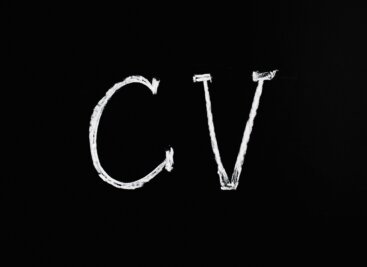Hiring fraud is an escalating issue within the UK, posing significant threats to businesses and the economy. As hiring processes become faster and more technologically advanced, the risks associated with fraud also increase.
Understanding Hiring Fraud
Hiring fraud involves deceptive practices during the recruitment process. It can be perpetrated by individuals seeking employment or by entities targeting job seekers.
The consequences include:
- financial losses
- reputational damage
- legal liabilities.
This type of fraud can take many forms, from falsified CVs and fake qualifications to sophisticated scams involving fraudulent recruitment agencies.
This is particularly crucial in fields like management consultancy recruitment, where the impact of hiring fraud can be significant due to the high level of expertise required.
LinkedIn is a particularly helpful tool as it places information in public record. However it is not foolproof. LinkedIn profiles can be faked albeit a large number of connections (especially mutual connections) is almost impossible to fake. Any discrepancies between the CV and LinkedIn, or lack of a LinkedIn profile should be robustly investigated.
Poor spelling or poor grammar can also be a red flag. Clearly not conclusive but in the same way that many scam emails and other approaches have errors, sometimes deliberate. any written information that has mistakes should be treated with caution, across the channels below.
Common Types of Hiring Fraud Targetting Employers
1. Fraudulent References
Description:
Reference fraud involves the use of fake references and ‘Reference Houses’ that provide falsified employment histories for a fee. These fraudulent references can be highly convincing, often supported by fabricated websites and contact details that appear legitimate.
Example:
A job seeker, rejected for multiple positions due to lack of experience, paid a ‘Reference House’ £500 for a crash course and fake references. After securing a job with these falsified credentials, the individual was coerced into committing fraud against their employer for the group that provided the fake references.
Prevention Tips:
- Verify job references through independent sources such as previous employers or reputable databases including LinkedIn.
- Where possible ask to speak to a reference. If not confirm through a call that the person providing the reference exists and is an employee of the company concerned.
- Scrutinise references carefully: does the email address look official? Are there spelling errors or additional characters? Do the dates of the reference match the employment history on the CV? Does the referee’s job title suggest a position of responsibility?
2. Qualification Fraud
Description:
Qualification fraud involves the use of counterfeit degrees and exaggerated academic achievements to gain employment. This type of fraud can include buying fake certificates from unaccredited institutions or falsifying grades and qualifications.
Example:
A bogus doctor, Zholia Alemi, worked in the NHS for over 20 years using a forged medical degree. Her deception was only uncovered due to a minor spelling error in a forged document.
Prevention Tips:
- Verify qualifications directly with the issuing institutions.
- Use services like the Higher Education Degree Datacheck (HEDD) to confirm the legitimacy of degrees.
- For an informal check is their qualification listed on LinkedIn and the same as their CV?
3. Fake Application Documents
Description:
This type of fraud involves using fake identity documents, professional registrations, and other paperwork to gain employment. Fraudsters may create counterfeit documents or alter existing ones to meet job requirements.
Example:
An individual used fake documents to secure a job as a night care assistant. The fraud was discovered during a payroll check that matched her details with a list of false identities.
Prevention Tips:
- Outsource document verification to employment screening specialists.
- Check the authenticity of professional registrations and identity documents with issuing bodies.
4. CV-Based Fraud
Description:
CV-based fraud includes false claims about employment history, qualifications, and other personal details on resumes. This type of fraud is often used to cover up gaps in employment, lack of experience, or criminal records.
Example:
A fraudster with a fabricated CV secured a senior NHS role by claiming false degrees and work experience. He was ordered to pay back nearly £100,000 after a ruling by the Supreme Court
Prevention Tips:
- Verify employment and other details through third-party sources
- Use services that specialise in educational and professional qualification verification.
- Be wary of red flags in CVs, such as inconsistent dates and exaggerated job titles.
- Check carefully for any discrepancies and inconsistencies between the CV and LinkedIn

5. Candidate use of Artificial Intelligence
Description:
Candidates use AI tools to craft CVs, application forms, and even interview responses. While not fraudulent per se, this can lead to unqualified individuals securing roles they are not equipped to handle.
Also, there is potential for the applicant to be AI generated in video interview.
Example:
A candidate used an AI app during a virtual interview, with her ‘phone to the side of the screen to generate real-time responses, which she then read out.
Prevention Tips:
- Consider using AI detection systems to identify computer-generated text albeit these are rarely foolproof
- Conduct competency-based and case study interviews to assess candidates’ genuine skills.
- Include at least one round of face-to-face interviews to reduce the risk of AI manipulation.
- Follow best practices in AI usage to ensure fair treatment of all candidates
6. Dual Employment
Description:
Dual employment occurs when an employee holds two jobs simultaneously, often violating employment contracts. This can lead to conflicts of interest, reduced productivity, and potential data breaches.
Example:
An employee worked full-time for both a council and an NHS trust, claiming sick leave from one while working for the other. The fraud was uncovered through payroll matching.
Prevention Tips:
- Update employment contracts to restrict dual employment. Be clear what is an acceptable “side hustle” and what isn’t.
- Monitor employee performance for signs of divided attention.
- Check websites including LinkedIn and other social media.
7. Immigration Fraud
Description:
This involves using false documents or overstaying visas to work illegally. It can include forged visas, fake birth certificates, and other fraudulent means to bypass immigration laws.
Example:
A supermarket chain was fined for employing students who exceeded their visa work hours. The fraud was discovered during an immigration enforcement raid.
Prevention Tips:
- Implement robust right to work checks using Identity Document Validation Technology (IDVT).
- Conduct in-person document verifications.
- Retain records of right to work checks for at least two years after employment ends.
8. Fraud via Recruitment Agencies or other third-party staff suppliers
Description:
Typically involving contract and interim employment, this includes using non-compliant agencies and consultancies and worker impersonation. Agencies may fail to conduct proper checks, leading to unqualified or fraudulent hires. It can be linked to Modern Slavery
Example:
A recruitment agency director diverted funds and provided unqualified workers, resulting in financial and reputational damage to clients.
Prevention Tips:
- Partner with accredited recruitment agencies and consultancies that follow compliance standards.
- Verify candidate identities on-site and ensure they match agency and supplier records.
- Require agencies and consultancies to issue ID badges, especially in regulated settings.
Best Practices for Preventing Hiring Fraud
1. Choose Reputable Recruiters and Screening Providers
Only work with recruitment agencies that are members of accredited bodies or otherwise clearly demonstrate high standards. Regularly audit agency practices to ensure compliance with legal and ethical standards.
2. Collaborate with Industry Groups
Engage with organisations like Cifas and the Better Hiring Institute for shared intelligence and best practices. Regularly participate in industry forums and working groups focused on fraud prevention.
3. Foster a Culture of Vigilance
Encourage employees to report suspicious activities and provide regular training on fraud detection. Ensure all staff involved in the hiring process are aware of potential hiring related scams, which can be very damaging to the employer. Promote a workplace culture that values honesty and integrity.
4. Use Advanced Onboarding Technologies
Implement systems for IP address verification and AI-driven fraud detection to ensure the authenticity of candidate information during the onboarding process.
5. Verify Employment Histories
Use independent verification services to check employment history. Maintain up-to-date records and conduct periodic reviews to identify any discrepancies.
6. Adopt Digital Right to Work Checks
Use Identity Document Validation Technology (IDVT) for faster and more accurate right to work checks. Ensure that your processes comply with the latest Home Office guidelines.
7. Monitor for Dual Employment
Conduct periodic checks to identify employees holding multiple jobs.
Conclusion
By implementing these practices, employers can significantly reduce the risk of hiring fraud. Continuous vigilance, use of LinkedIn, and collaboration with industry bodies are crucial to maintaining a safe and fair hiring environment. For more detailed guidance and support, employers should join the Better Hiring Institute and utilise their extensive resources and best practice toolkits.
Hiring fraud is a dynamic and evolving threat, and staying informed about the latest trends and prevention strategies is essential.
With thanks to Better Hiring Institute and Reed Screening
Job seekers can also be the victims of fraud. We address this topic in our guide ‘Job search scams: key tips for applicants to avoid recruitment fraud’.





